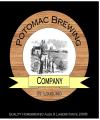
Blending two yeasts to make a hybrid?
#1

Posted 02 May 2010 - 02:08 PM
#2

Posted 02 May 2010 - 02:10 PM
#3

Posted 02 May 2010 - 04:57 PM
#4

Posted 02 May 2010 - 06:18 PM
#5

Posted 02 May 2010 - 07:06 PM
#6

Posted 03 May 2010 - 08:07 AM
I was considering mixing White Labs WLP002 with WLP028 (English Ale with Edinburgh Ale) for a super-malty/sweet and well flocculating combo that would stand up to decent amounts of ABV (maybe 10 or 12, which the 028 can definitely handle). Hoping for a strong fermentation that'll retain a lot of residual sweetness and possibly add a bit of nice fruitiness.What are you thinking of doing?
#7

Posted 03 May 2010 - 08:41 AM
#8

Posted 03 May 2010 - 10:47 AM
The problem with mixing yeasts is that you don't know and can't control what you'll get. In your scenario, what's to keep one from dominating so that you won't get any benefits from the other?I was considering mixing White Labs WLP002 with WLP028 (English Ale with Edinburgh Ale) for a super-malty/sweet and well flocculating combo that would stand up to decent amounts of ABV (maybe 10 or 12, which the 028 can definitely handle). Hoping for a strong fermentation that'll retain a lot of residual sweetness and possibly add a bit of nice fruitiness.
#9

Posted 03 May 2010 - 12:11 PM
#10

Posted 03 May 2010 - 12:32 PM
#11

Posted 03 May 2010 - 06:50 PM
Pitch rate. At good pitching rates the yeast are not competing to grow, they are fermenting.If you are reasonable about how you mix the two you should get similar results batch to batch.MolBasserThe problem with mixing yeasts is that you don't know and can't control what you'll get. In your scenario, what's to keep one from dominating so that you won't get any benefits from the other?
#12

Posted 04 May 2010 - 04:15 AM
This is an idea I have been mulling over... I have a 15 gallon keg I'd love to brew a couple carboys full of complimentary brew with different yeasts and blend into a big keg. Seems like a really great way to do the yeast blending and probably will give a more distinct "blending" profile than just tossing two yeasts in and seeing what flavours come out. $0.02AFAIAC, the best way to use multiple strains is to split the batch, ferment each with a different yeast, then blend them back together. That's what we do with the Old Stoner BW. 5 gal. gets 1272 or 1056, 5 gal. gets 1450, blend at bottling.
#13

Posted 04 May 2010 - 09:24 AM
Thanks....that's a good point. And probably something you can control in the commercial world more easily than we can control it in homebrewland.Pitch rate. At good pitching rates the yeast are not competing to grow, they are fermenting.If you are reasonable about how you mix the two you should get similar results batch to batch.MolBasser
#14

Posted 04 May 2010 - 12:18 PM
0 user(s) are reading this topic
0 members, 0 guests, 0 anonymous users














